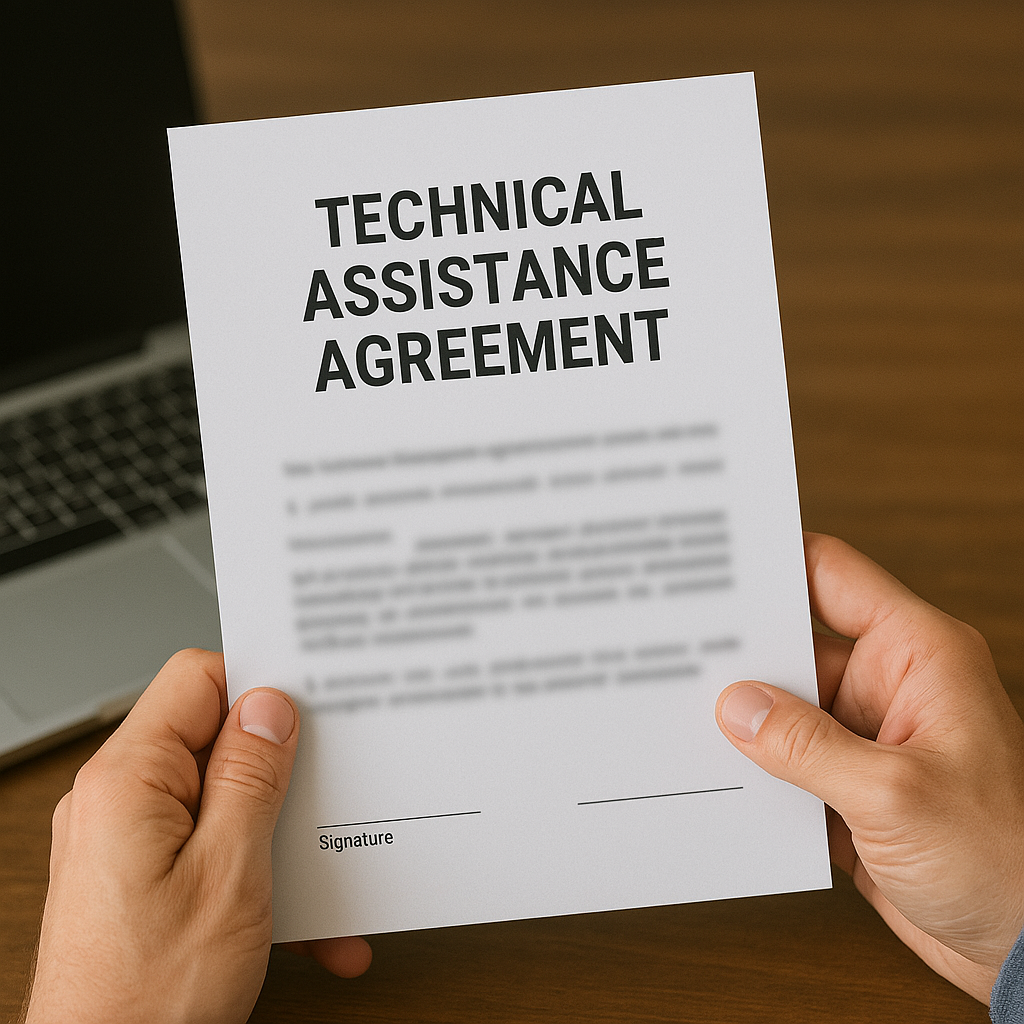Let’s be real. If you’ve ever sat in a meeting about international collaboration, someone probably muttered the words technical assistance agreement like it was a casual formality. But it’s not. It’s a big deal. And if you don’t understand what it is—or worse, if you ignore it—you might be one step away from making a very expensive mistake.
So here’s your jargon-free, stress-free breakdown of what a technical assistance agreement is, why it matters, and what happens when you don’t have one in place.
You’re Building Something Brilliant… And Then It Hits You
You’ve designed a game-changing piece of tech. Maybe it’s software, maybe it’s hardware. Perhaps it’s a piece of a defense system, or maybe it’s an advanced AI model for encrypted communications. Either way, you’re ready to scale globally.
Your team starts working with a group in another country. You’re about to send over technical drawings, training materials, or some intellectual know-how that helps them implement or integrate your tech.
Now here’s the catch.
You can’t just hit “send.”
If your tech is regulated under ITAR (International Traffic in Arms Regulations) or EAR (Export Administration Regulations), sharing technical knowledge across borders is legally restricted. And that’s where a technical assistance agreement, or TAA, comes into play.
So, What Exactly Is a Technical Assistance Agreement?
A technical assistance agreement is a formal, legal contract that allows a U.S. company to share controlled technical data, services, or training with foreign nationals or foreign entities—legally. Without it, you’re potentially in violation of U.S. export control laws.
But it’s more than just a contract. It’s a clearance from the U.S. government, specifically the Department of State through the Directorate of Defense Trade Controls (DDTC), giving you the green light to exchange sensitive knowledge or services.
It essentially says:
“We’ve reviewed your plans, your partner, and your information. You’re good to go—as long as you stick to the rules.”
What Does a TAA Typically Cover?
A properly drafted TAA will outline:
- Who is involved (U.S. entity, foreign partner, third parties)
- What specific technical data or services are being transferred
- How that information will be shared (on-site, remote, encrypted files, etc.)
- Who is authorized to access it
- How long the agreement is valid
- How records will be maintained for auditing purposes
It can also cover things like re-transfers, modification clauses, and exact scope boundaries.
Why You Absolutely Need a Technical Assistance Agreement
The global economy runs on partnerships. But when your project includes military tech, dual-use items, encryption, satellite components, or classified research, the U.S. government wants to know what you’re doing and with whom.
If you move forward without a TAA, you’re exposing your company to:
- Civil and criminal penalties
- Contract cancellations
- Damage to your reputation
- Potential blacklisting from future government projects
And yes, all of that can happen even if the person you’re sharing info with is an ally or a friend. Intent does not equal compliance. It doesn’t matter if you didn’t mean to break export laws—doing it, even unknowingly, can land you in hot water.
When Do You Need a TAA?
You need a TAA when you plan to:
- Train foreign personnel on defense articles
- Share technical specs for ITAR-controlled products
- Provide engineering services to foreign governments
- Collaborate on R&D with overseas partners
- Walk into any situation where U.S. military tech or classified software is being explained, demonstrated, or discussed outside the United States
Even if you’re not shipping physical products, information is power, and in the eyes of regulators, sharing it requires clearance.
Is a TAA Just Bureaucracy? Not Even Close.
Too many companies treat TAAs as red tape—something to be shoved to the legal team and filed away. But here’s the truth: your entire international strategy could depend on whether your TAA is accurate, timely, and complete.
A missing clause, a vague scope, or a misidentified end user can delay your deal for months, or worse—get it denied altogether.
And if your TAA isn’t in place before you start training or transferring information, you’ve already violated the rules.
This isn’t about paranoia. It’s about protection.
What If You Don’t Know Where to Start?
That’s where Capitol 50 comes in.
We specialize in taking your TAA from draft to approval without confusion, delay, or costly mistakes. We translate complex compliance language into clear, actionable steps. Whether it’s your first agreement or your fiftieth, we help you:
- Define a clear scope and strategy
- Communicate effectively with DDTC
- Avoid common errors and rejections
- Speed up the approval process
- Stay audit-ready at all times
You didn’t build your business to become a compliance expert. We did.
Your Innovation Deserves Protection
We get it. You’re not in business to read federal code or spend three weeks figuring out what “22 CFR § 120.33” means.
You’re here to solve problems, build tech, and expand globally. A technical assistance agreement isn’t just another document—it’s your passport to doing that legally, safely, and confidently.
So let us help you unlock your global potential the right way.
Book your appointment with Capitol 50 today.
We’ll handle the compliance. You handle the innovation.
If you don’t follow/subscribe us, then you’ll probably not going to ever see us.
